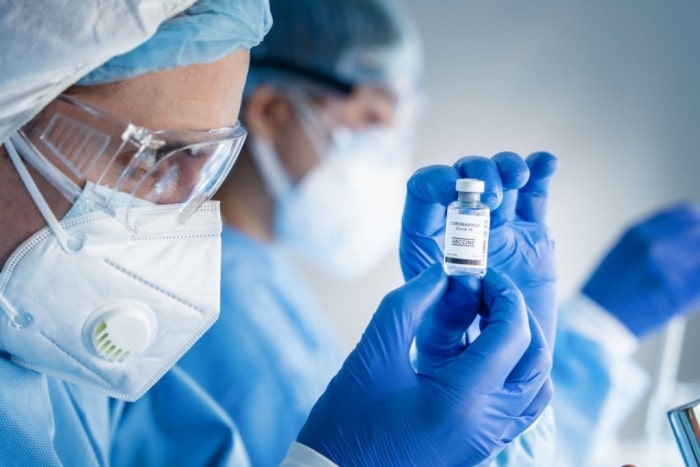
As the world awaits the vaccine that would alleviate the health and economic turmoil brought about by the COVID-19 outbreak, it’s worth revising the proper storage and transport vaccine procedure. From maintaining the cold chain to selecting the right freezer, there are several things to look after when creating the optimal environment for vaccine handling.
The cold chain
Vaccines, just like any other product, have a supply chain. However, this product is unique in the sense that the chain is temperature-controlled and that’s why it’s labelled as “cold.” The chain begins with the storage unit at the plant where vaccines are produced.
Then, vaccines are transported in a freezer truck and finally stored at the provider facility. The cold chain is finally “broken” when it’s taken out of the freezer and administrated to the patient. As you can see, everyone from the manufacturer, across the distributer and finally, the public health staff are responsible for maintaining the cold chain.
Introducing operating procedures
Every facility that handles vaccines needs to establish procedures that ensure that the cold chain isn’t compromised in any way. The procedures should state a bit of general information: which company manufactured the vaccine and their contact info, who are the equipment service providers, and who is who in the facility, including their job description.
Further on, the procedures should address storage and handling by including info about vaccine inventory management that incorporates both ordering and monitoring storage conditions. Finally, the procedures should clearly state actions necessary in case of an emergency, such as a power failure or a fatal equipment malfunction.
Training the staff
In most cases equipment is not an issue but the staff that manipulates the vaccines can be poorly trained. Foremost, their storage and handling training should be an integral part of employee orientation from the first day on the job.
Also, not all vaccines are the same and they come with different handing instructions. Therefore, whenever a new vaccine is added to inventory, staff should undergo training to learn how to handle it properly. For instance, a makeshift container with water bottles packed with ice stays cold for 8 hours.
What does a coordinator do?
The most important member of staff is the coordinator. They are the ones who actually order the vaccine and later follow the receipt and storage of each delivery. Furthermore, they are in charge of monitoring vaccines inside storage units, removing expired vaccines, and rotating stock when required. Finally, it’s the coordinator’s job to set up temperature monitoring devices for recording daily storage temperatures.
Tools of the trade
TMDs are just one of the devices and apparatus used in vaccine storage and transport. For instance, laboratory equipment includes vaccine storage refrigerators that freeze or refrigerate biologics. Similar freezers can be found in medical centres, hospitals, veterinary surgeries, and retail pharmacies. The latter location is where vaccines are delivered to in rural and hard to access regions.
The manufacturer and the distributors possess these purpose-built cooling units that meet all the standards of proper vaccine storage. In emergency cases, household refrigerators can be used to store vaccines for limited periods. If such a scenario occurs, vaccines should be kept in the freezer unit but the fridge itself.
What exactly is a TMD?
The aforementioned temperature monitoring devices play a major role in vaccine storage and they are just as important as pharmaceutical-grade freezers. A reliable TMD is essential for keeping the right temperature of the vaccines so they don’t go off.
These devices have a buffered temperature probe that measures the temperature of vaccines more closely than a standard thermometer would. In fact, a thermometer merely measures the air temperature around the vaccines, rather than the temperature of the vaccines themselves.
On most models, the probe is detachable and it’s buffered with glycol, sand, or glass beads. Advanced TMDs are equipped with an alarm for extreme temperatures and a low-battery indicator. Keep in mind that such monitoring devices usually have an uncertainty of half a degree Centigrade (plus or minus).
The ideal storage unit
The room where the vaccine storage unit is kept should be a well-ventilated room and with plenty of space between individual units, the ceiling, or the wall. Like with any refrigerator, the cover of the motor compartment shouldn’t be blocked by anything.
The freezer should stand firm on level ground. The gasket and the sealant should be in a pristine state, without any gaps or cracks. The best air temperature around the vaccine storage unit is actually the standard indoor room temperature (between 20° and 25°C).
How does transport work
As far as vaccine transport is concerned, the optimal environment shouldn’t differ from the one needed for storage. Transporting vaccines to an off-site facility shouldn’t take longer than 8 hours. Usually, the amount of vaccine transported matches the facility’s need for that day.
Creating the optimal environment for vaccine handling isn’t easy but luckily, there are pre-established procedures that ease the entire process. From the manufacturing plant to doctors in the field, the cold chain should never be compromised.
